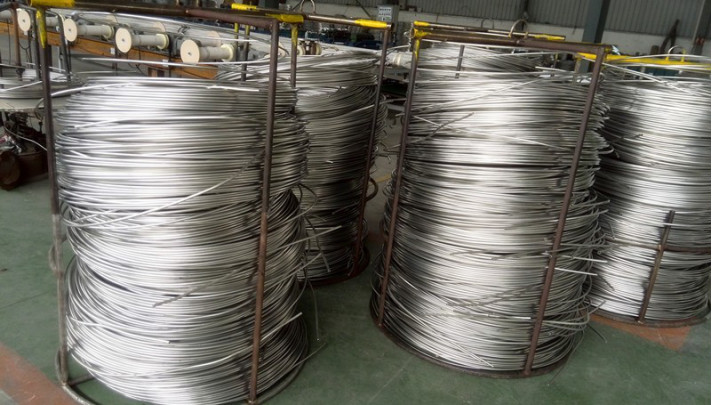 Trace analysis of liquid samples has a wide range of applications in the life sciences and environmental monitoring. In this work, we have developed a compact and inexpensive photometer based on metal waveguide capillaries (MCCs) for ultrasensitive determination of absorption. The optical path can be greatly increased, and much longer than the physical length of the MWC, because light scattered by the corrugated smooth metal sidewalls can be contained within the capillary regardless of the angle of incidence. Concentrations as low as 5.12 nM can be achieved using common chromogenic reagents due to new non-linear optical amplification and fast sample switching and glucose detection.
Trace analysis of liquid samples has a wide range of applications in the life sciences and environmental monitoring. In this work, we have developed a compact and inexpensive photometer based on metal waveguide capillaries (MCCs) for ultrasensitive determination of absorption. The optical path can be greatly increased, and much longer than the physical length of the MWC, because light scattered by the corrugated smooth metal sidewalls can be contained within the capillary regardless of the angle of incidence. Concentrations as low as 5.12 nM can be achieved using common chromogenic reagents due to new non-linear optical amplification and fast sample switching and glucose detection.
Photometry is widely used for trace analysis of liquid samples due to the abundance of available chromogenic reagents and semiconductor optoelectronic devices1,2,3,4,5. Compared to traditional cuvette-based absorbance determination, liquid waveguide (LWC) capillaries reflect (TIR) by keeping the probe light inside the capillary1,2,3,4,5. However, without further improvement, the optical path is only close to the physical length of LWC3.6, and increasing the LWC length beyond 1.0 m will suffer from strong light attenuation and a high risk of bubbles, etc.3, 7. With regard to the proposed multi-reflection cell for optical path improvements, the detection limit is only improved by a factor of 2.5-8.9.
There are currently two main types of LWC, namely Teflon AF capillaries (having a refractive index of only ~1.3, which is lower than that of water) and silica capillaries coated with Teflon AF or metal films1,3,4. To achieve TIR at the interface between dielectric materials, materials with a low refractive index and high light incidence angles are required3,6,10. With respect to Teflon AF capillaries, Teflon AF is breathable due to its porous structure3,11 and can absorb small amounts of substances in water samples. For quartz capillaries coated on the outside with Teflon AF or metal, the refractive index of quartz (1.45) is higher than most liquid samples (eg 1.33 for water)3,6,12,13. For capillaries coated with a metal film inside, transport properties have been studied14,15,16,17,18, but the coating process is complicated, the surface of the metal film has a rough and porous structure4,19.
In addition, commercial LWCs (AF Teflon Coated Capillaries and AF Teflon Coated Silica Capillaries, World Precision Instruments, Inc.) have some other disadvantages, such as: for faults. . The large dead volume of the TIR3,10, (2) T-connector (to connect capillaries, fibers, and inlet/outlet tubes) can trap air bubbles10.
At the same time, the determination of glucose levels is of great importance for the diagnosis of diabetes, cirrhosis of the liver and mental illness20. and many detection methods such as photometry (including spectrophotometry 21, 22, 23, 24, 25 and colorimetry on paper 26, 27, 28), galvanometry 29, 30, 31, fluorometry 32, 33, 34, 35, optical polarimetry 36 , surface plasmon resonance. 37, Fabry-Perot cavity 38, electrochemistry 39 and capillary electrophoresis 40,41 and so on. However, most of these methods require expensive equipment, and detection of glucose at several nanomolar concentrations remains a challenge (for example, for photometric measurements21, 22, 23, 24, 25, 26, 27, 28, the lowest concentration of glucose). the limitation was only 30 nM when Prussian blue nanoparticles were used as peroxidase mimics). Nanomolar glucose analyzes are often required for molecular-level cellular studies such as inhibition of human prostate cancer growth42 and the CO2 fixation behavior of Prochlorococcus in the ocean.
Post time: Nov-26-2022
